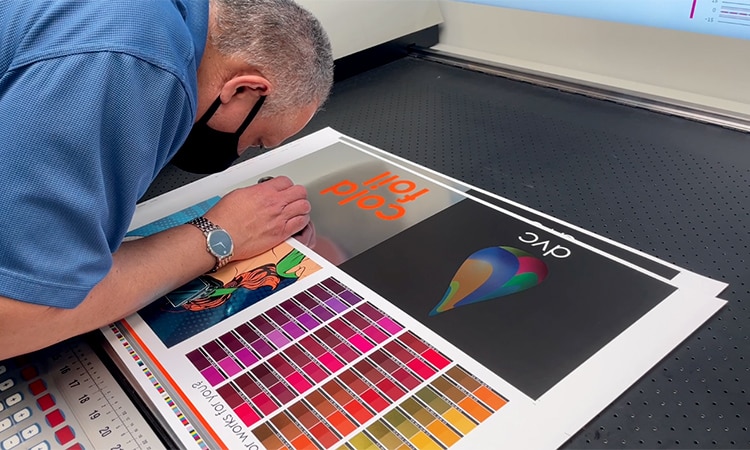A Comprehensive Guide to Recognizing Litho Printing Methods
The globe of litho printing, a technique stemming from the late 18th century, is an interesting blend of background, technology, art and science. Stay with us as we trip right into the fascinating realm of litho printing.
The Historical Advancement of Litho Printing
The historical trajectory of litho printing, a critical advancement in the realm of communication, is an exciting story of human resourcefulness. Birthed in the late 18th century by Alois Senefelder, this strategy was at first an economical approach of releasing theatrical jobs. Lithography, acquired from the Greek words for 'rock' and 'to write', used a smooth rock surface area to move pictures onto paper. The procedure advanced with the introduction of the rotary press, which substantially raised productivity (litho printing). In the 20th century, the development of balanced out lithography reinvented the sector, permitting for automation of top notch prints. Each phase of litho printing's development showcases humankind's ruthless quest of effectiveness and quality in visual communication.
Deciphering the Scientific Research Behind Litho Printing Inks
Progressing in the exploration of litho printing techniques, the emphasis currently moves to the science behind litho printing inks. The composition of these inks, their drying out procedure, and shade mixing techniques create the foundation of this complex art kind. Recognizing these elements is crucial to mastering the craft and attaining the wanted print outcomes.
Make-up of Litho Inks
In lithographic printing, the basic role of litho inks can not be overstated. The make-up of litho inks differs relying on its objective, yet normally, they include 2 main parts - pigments and automobiles. Pigments, the color-providing elements, are carefully ground fragments suspended in the lorry, a fluid that lugs the pigment onto the printing surface. The vehicle is a complicated combination of solvents, oils, and materials, which influence the ink's drying time, bond, and gloss. Furthermore, different ingredients are present to improve certain residential or commercial properties like circulation, drying, and resistance to environmental impacts. Each part plays an important part in the last print's high quality, making the precise formula of litho inks a detailed science.
Ink Drying Refine
From the composition of litho inks, focus transforms to the fascinating process of ink drying out. The drying out process is important, as it impacts the last print's top quality and long life. 2 key methods are used in litho printing: oxidative drying and absorption. Oxidative drying out includes the ink reacting with oxygen in the air to form a difficult, dry film. This method provides a sturdy coating, but can be slower contrasted to absorption. Absorption, on the other hand, includes the ink leaking right into the paper fibers, which is a quicker process but can bring about dig this much less vivid shades. The selection in between these techniques depends on elements such as print speed requirements, the paper kind utilized, and the preferred finish.
Shade Mixing Techniques
While the drying out process plays a crucial duty in litho printing, the science of shade mixing techniques holds equivalent relevance. The science behind litho printing inks additionally takes into account the openness of the ink, which influences exactly how shades overlay and mix.
The Art and Design Aspects in Litho Printing
Litho printing breathes life right into art and design through its special aspects. Litho printing accommodates a variety of shades, making it possible for musicians to produce lively and dynamic prints. This combination of precision and versatility makes litho printing a recommended selection for lots of artists and developers.
Modern Applications of Litho Printing Methods
Litho printing techniques have actually discovered extensive usage in the modern business industry. Its impact and value continue to expand with see post the introduction of brand-new developments and technologies in the area. This section will certainly explore these modern applications and the transformative function they play in the printing sector.
Industrial Litho Printing Uses
Litho printing continues to be a crucial part of the commercial industry. High-volume printing tasks, such as the production of books, newspapers, and packaging, rely on litho printing for its ability to deliver exceptional picture high quality and expense effectiveness. Litho printing also offers a broad color spectrum, premium to that of electronic printing.
Innovations in Litho Printing
Pushing the borders of typical strategies, modern-day innovations have actually sustained a host of advancements in litho printing. These innovations have not just enhanced the high quality and effectiveness of litho prints however also expanded its application scope. One popular growth is digital litho printing, which combines the merits of electronic innovation with litho's top notch result. This hybrid model offers faster setup times, reduced waste, and makes it possible for on-demand printing. An additional notable improvement is the introduction of eco-friendly inks. These inks, made from vegetable or soy-based remedies, have actually considerably reduced the sector's environmental impact. litho printing. In addition, the development of sophisticated plate modern technology has streamlined the printing procedure, resulting in sharper images and improved color fidelity. These advancements underscore the long-lasting significance of litho Check Out Your URL printing in the contemporary world.
Discovering the Process of Litho Printing: Detailed

Difficulties and Solutions in Contemporary Litho Printing

Regardless of the precision and tradition that litho printing happily promotes, it is not without its collection of modern obstacles. Digital litho printing allows for cost-effective short runs and simple personalization, resolving the issue of variable data. Hence, while there are difficulties, the litho printing industry is proactively adjusting to fulfill them head-on, ensuring its importance in the future.
Conclusion
In verdict, litho printing, with its abundant history and clinical intricacies, holds a considerable area in the print sector. The future of litho printing hinges on its capacity to adjust to these transforming needs, attesting its long-lasting worth in a developing market.

Comments on “Custom Designs Enhanced Through litho printing”